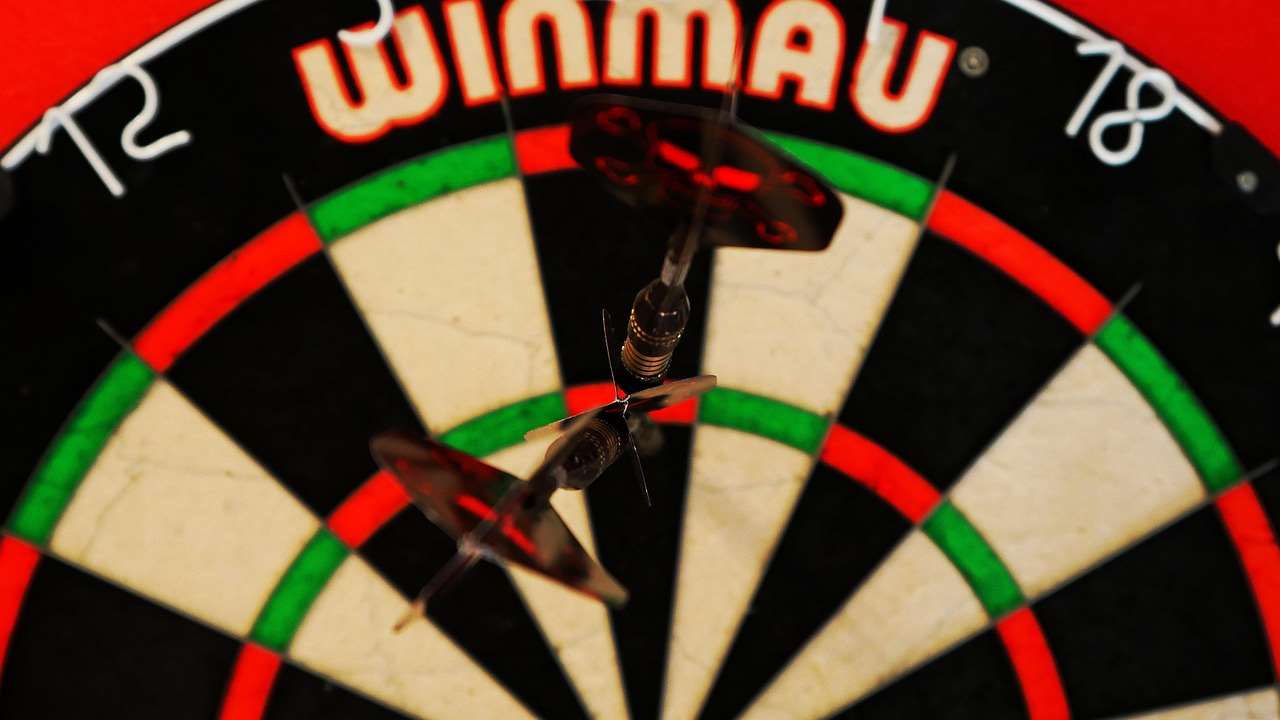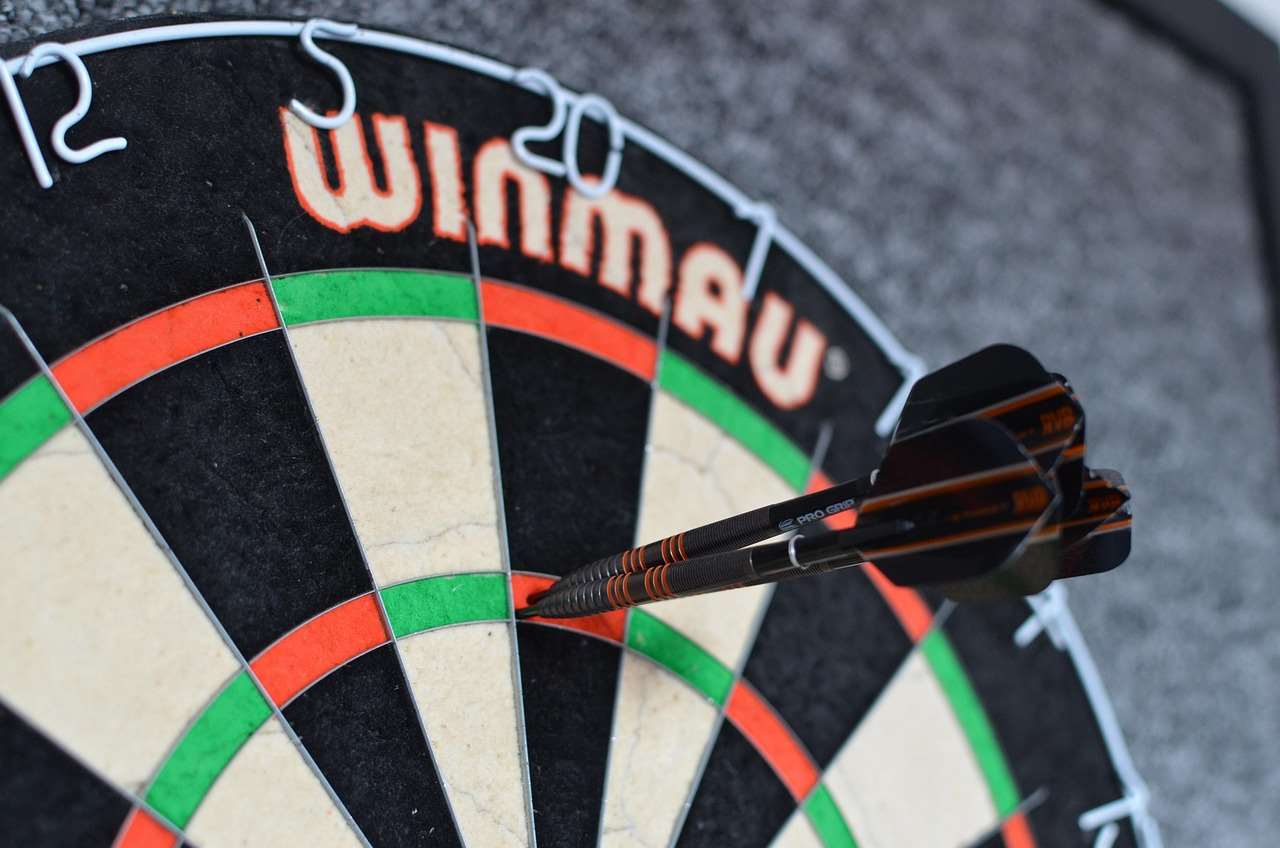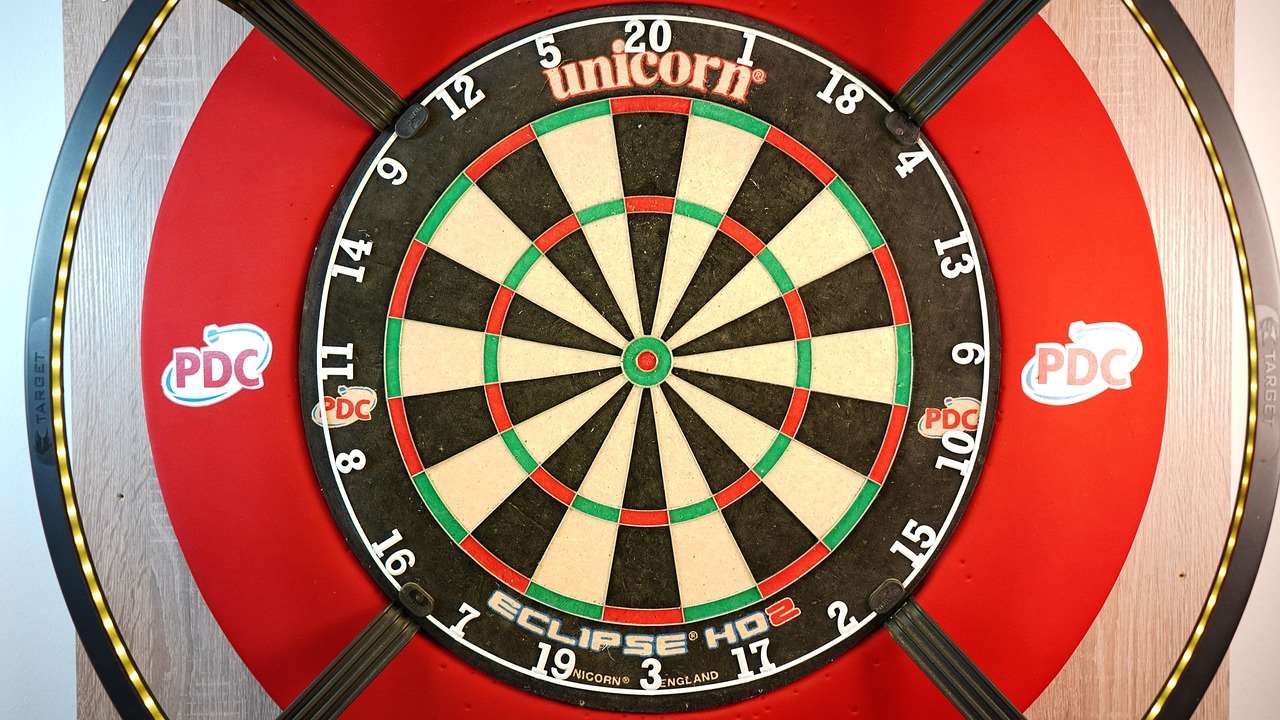Mastering the koto darts assembly is key to enjoying consistent and accurate throws. This guide simplifies the process, ensuring your darts are perfectly balanced and ready to hit the bullseye, and will cover everything from identifying components to fine-tuning your setup for optimal performance.
⚠️ Still Using Pen & Paper (or a Chalkboard)?! ⚠️
Step into the future! The Dart Counter App handles all the scoring, suggests checkouts, and tracks your stats automatically. It's easier than you think!
Try the Smart Dart Counter App FREE!Ready for an upgrade? Click above!
Understanding Your Koto Darts Assembly
Before you can even begin the koto darts assembly process, it’s vital to understand the individual components that make up a complete dart. Each part plays a crucial role in the dart’s flight and overall performance. Familiarizing yourself with these components will not only make assembly easier but also allow you to customize your darts to suit your individual throwing style.
- Barrel: The barrel is the main body of the dart, typically made of brass, tungsten, or a combination of both. Tungsten barrels are denser and allow for slimmer dart designs.
- Shaft: Also known as the stem, the shaft connects to the barrel and holds the flight. Shafts come in various lengths and materials, influencing the dart’s balance and trajectory.
- Flight: The flight is the aerodynamic surface at the back of the dart, responsible for stabilizing its flight. Flights come in different shapes and sizes, each affecting the dart’s speed and stability.
- Point: The point is the sharp end of the dart that pierces the dartboard. Points can be fixed or replaceable, smooth or textured.
- O-Rings (Optional): Small rubber rings that sit between the barrel and the shaft to prevent loosening during play.
Understanding these components is essential to selecting the right parts for your koto darts assembly. For example, if you find your darts wobbling in flight, experimenting with different flight shapes could provide the solution. Or, if your shafts constantly come loose, consider adding O-rings.

Step-by-Step Koto Darts Assembly Guide
Now that you know the parts, let’s dive into the actual koto darts assembly. This process is straightforward, but paying attention to detail will ensure a secure and well-balanced dart.
- Prepare Your Components: Lay out all the parts of your dart: barrel, shaft, flight, and point. Ensure everything is clean and free of debris.
- Attach the Shaft to the Barrel: Carefully screw the shaft into the threaded hole at the back of the barrel. Don’t overtighten; a snug fit is all that’s needed. If using O-rings, place them on the shaft before screwing it into the barrel.
- Insert the Flight into the Shaft: Most shafts have four slots at the back to accommodate the flight. Carefully slide the flight into these slots, ensuring it’s fully seated and secure. Some flights may require folding before insertion.
- Check for Tightness: Give each dart a gentle wiggle test to ensure all connections are secure. If anything feels loose, tighten it carefully.
Following these simple steps will result in a well-constructed dart, ready for throwing. Remember that the darts technique for beginners is just as important as the assembly.
Troubleshooting Common Assembly Issues
Even with careful assembly, issues can sometimes arise. Here are a few common problems and their solutions:
- Shafts Coming Loose: Use O-rings or thread-locking compound (sparingly) to keep shafts secure.
- Flights Falling Out: Use flight protectors or replace worn flights with new ones. Consider using flights with a tighter fit.
- Broken Shafts: Replace damaged shafts immediately to maintain dart balance.
Choosing the Right Components for Your Koto Darts
The performance of your darts relies heavily on the choice of components. Here’s what to consider when selecting parts for your koto darts assembly:
Barrel Material
The material of the barrel significantly impacts the dart’s weight, size, and feel. Brass barrels are more affordable and suitable for beginners. Tungsten barrels are denser, allowing for slimmer designs and tighter groupings. Nickel-silver barrels offer a balance between price and performance.
Shaft Length and Material
Shaft length affects the dart’s flight trajectory. Shorter shafts tend to make the dart fly straighter, while longer shafts provide more stability. Shafts are typically made of nylon, aluminum, or carbon fiber. Nylon shafts are inexpensive and durable, while aluminum and carbon fiber shafts offer greater strength and precision.
Flight Shape and Size
Flights are crucial for stabilizing the dart in flight. Standard-shaped flights offer the most stability and are suitable for beginners. Slim flights reduce drag and allow for tighter groupings. Kite and pear-shaped flights offer a balance between stability and speed.

Fine-Tuning Your Koto Darts Assembly for Optimal Performance
Once you’ve assembled your darts, the real fun begins: fine-tuning them to your individual throwing style. This involves experimenting with different component combinations to find what works best for you.
Experimenting with Shaft Lengths
Try different shaft lengths to see how they affect your dart’s flight path. If your darts are consistently landing nose-up, try a shorter shaft. If they’re landing nose-down, try a longer shaft. Even slight adjustments can make a significant difference. Be aware that what darts does bully boy use might be different from what suits you best.
Adjusting Flight Shapes
Changing the flight shape can dramatically alter your dart’s stability and speed. If you’re having trouble controlling your darts, try a larger, more stable flight. If you’re looking for more speed and tighter groupings, try a smaller, slimmer flight. Consider the impact of the Electronic dart score counter on your practice sessions while you’re experimenting to accurately monitor results.
Weight Distribution
The weight distribution of your dart can also influence its flight. Some barrels are front-weighted, while others are center-weighted or rear-weighted. Experiment with different barrel shapes to find what feels most comfortable and provides the most consistent results. You might find that using a particular weight distribution requires adjustments to your darts technique for beginners or even seasoned players.

Maintaining Your Koto Darts for Longevity
Proper maintenance is crucial for extending the life of your darts and ensuring consistent performance. Here are a few tips:
- Clean Your Barrels Regularly: Use a soft cloth to wipe down your barrels after each use. This removes dirt, oil, and debris that can affect your grip.
- Check for Loose Connections: Regularly check that your shafts are securely attached to your barrels and that your flights are firmly seated in your shafts.
- Replace Worn Components: Replace damaged or worn shafts, flights, and points promptly to maintain dart balance and performance. Don’t wait until the last minute to replace parts if you’re planning to attend darts match newcastle!
- Store Your Darts Properly: Store your darts in a case or holder to protect them from damage when not in use.
By following these maintenance tips, you can keep your koto darts assembly in top condition for years to come. Proper care also contributes to more consistent results when practicing for events, even local ones, like darts blackpool 2025 tickets release date.
Advanced Tips and Customization for Koto Darts Assembly
For seasoned dart players, customization options extend beyond basic component selection. These advanced techniques can further refine dart performance to match individual preferences.
Using Flight Protectors
Flight protectors are small metal or plastic pieces that attach to the back of the flight, preventing damage from impact with other darts. They significantly extend the lifespan of your flights and maintain their shape, contributing to more consistent flight patterns. Consider using flight protectors, especially if you often find yourself scoring a darts score 180 as that implies a lot of darts hitting the same area.
Experimenting with Different Point Types
The type of point you use can also affect your dart’s performance. Smooth points are easier to remove from the board, while textured points provide a more secure grip. Replaceable points allow you to switch between different point types without replacing the entire dart. Some players even prefer converting steel tip darts into soft tip darts for electronic dartboards.

Adding Grip to Your Barrels
If you struggle with grip, you can add grip tape or apply a specialized grip coating to your barrels. This provides a more secure hold and reduces the risk of slippage, leading to more accurate throws. Just be mindful of regulations around grip enhancements if playing in organized competitions.
The Psychology of Koto Darts Assembly and Performance
While the technical aspects of koto darts assembly are crucial, the mental aspect plays a significant role in your overall performance. Feeling confident in your equipment can significantly impact your accuracy and consistency.
Building Confidence Through Customization
When you meticulously assemble and fine-tune your darts to your exact specifications, you’re investing time and effort into your game. This process instills confidence and a sense of ownership, which translates into better focus and performance on the oche. Knowing that your darts are perfectly suited to your throwing style can give you a psychological edge over your opponents. This may matter less in casual games, but in something like darts double elimination bracket tournaments, the psychological edge becomes very important.
The Power of Familiarity
Once you find a dart setup that works for you, stick with it. Constantly changing your darts can disrupt your rhythm and negatively impact your consistency. The familiarity of holding and throwing the same darts builds muscle memory and allows you to focus on your technique rather than the equipment.

Dealing with Equipment Frustration
Even with the best equipment, frustration can arise when your darts aren’t performing as expected. It’s important to remain calm and avoid making drastic changes in the heat of the moment. Instead, take a break, analyze your technique, and make small adjustments as needed. Remember that even professionals experience variance in performance, and the key is to not give up and maintain a positive attitude. This is important whether you are aiming for a what is darts match treble or just trying to improve your average score.
Conclusion
Mastering the art of koto darts assembly goes beyond simply putting the pieces together. It’s about understanding the components, fine-tuning your setup, and maintaining your darts for optimal performance and longevity. By carefully selecting your barrel, shaft, and flight, and adjusting them to fit your individual throwing style, you can significantly improve your accuracy and consistency on the oche. Remember that confidence and familiarity with your equipment are just as important as the technical aspects. So, take the time to experiment, find what works best for you, and enjoy the game! Start improving your game today – explore different dart components and find your perfect combination!
Hi, I’m Dieter, and I created Dartcounter (Dartcounterapp.com). My motivation wasn’t being a darts expert – quite the opposite! When I first started playing, I loved the game but found keeping accurate scores and tracking stats difficult and distracting.
I figured I couldn’t be the only one struggling with this. So, I decided to build a solution: an easy-to-use application that everyone, no matter their experience level, could use to manage scoring effortlessly.
My goal for Dartcounter was simple: let the app handle the numbers – the scoring, the averages, the stats, even checkout suggestions – so players could focus purely on their throw and enjoying the game. It began as a way to solve my own beginner’s problem, and I’m thrilled it has grown into a helpful tool for the wider darts community.